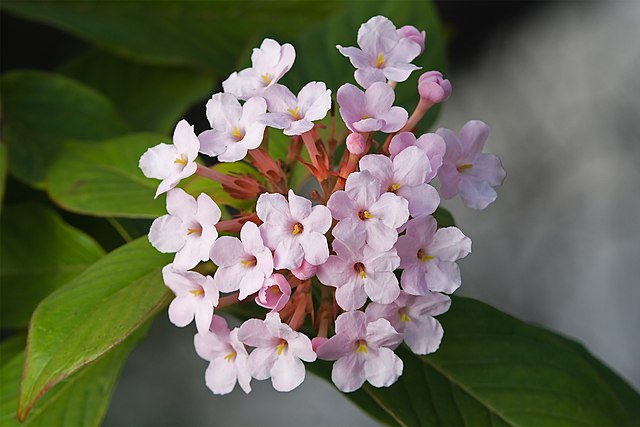Rubiaceae is a family of flowering plants, commonly known as the coffee, madder, or bedstraw family. It consists of terrestrial trees, shrubs, lianas, or herbs that are recognizable by simple, opposite leaves with interpetiolar stipules and sympetalous actinomorphic flowers. The family contains about 13,500 species in about 620 genera, which makes it the fourth-largest angiosperm family. Rubiaceae has a cosmopolitan distribution; however, the largest species diversity is concentrated in the tropics and subtropics. Economically important genera include Coffea, the source of coffee; Cinchona, the source of the antimalarial alkaloid quinine; ornamental cultivars ; and historically some dye plants.
Rubiaceae
Alberta magna
Arachnothryx leucophylla
Asperula tinctoria
A liana is a long-stemmed, herbaceous or woody vine that is rooted in the soil at ground level and uses trees, as well as other means of vertical support, to climb up to the canopy in search of direct sunlight. The word liana does not refer to a taxonomic grouping, but rather a habit of plant growth – much like tree or shrub. It comes from standard French liane, itself from an Antilles French dialect word meaning to sheave.
Mixed-species tangle of lianas in tropical Australia
Lianas in Udawattakele, Sri Lanka
A canopy of Entada gigas that has formed over a monkey ladder vine (Bauhinia glabra) on Kauai, Hawaii
Liana tangle across a forest in the Western Ghats








